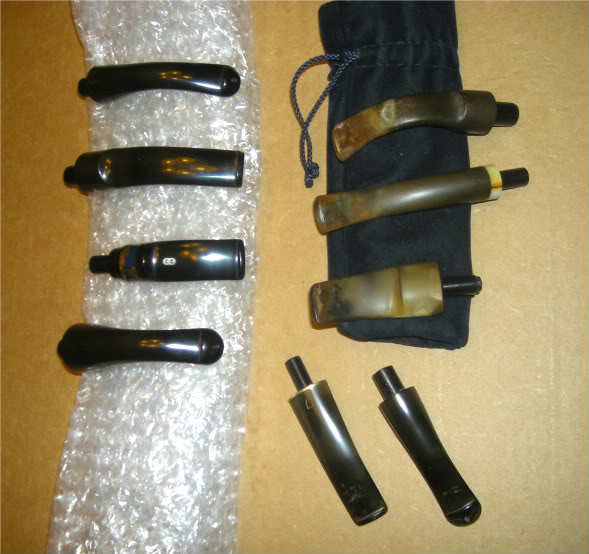Doing a little side job for a buddy who doesn't have time to restore some of the stems on his estates. I have a very specific process for doing this odious job...I use WHATEVER I think will work. I always start with the worst first and work my way toward the easiest...just smart planning. Then on each stem I start with the deepest and hardest indent or pit or whatever, knowing I'll have to go at least that deep and work back from there. Teeth marks, chew marks and scars are easy to fix...starting with a couple of Swiss pattern needle files and moving to 400 grit paper, then 600, then (my latest trick) DeniCare applied to a strip of the Polyester 0000 'Steel Wool' substitute and used like a shoe shine cloth, then black emery on a denim wheel and finally rouge on a soft buff.
The ones I've finished are on the left...the ones that are still to do (and remember...these are the ones less 'crudded up') are hopefully obvious. I think the project is coming along nicely. BTW: The stems on the left have taken between 1 and 1 1/2 hours to complete...each! All I can say is...it's the pits! Their removal and blending the edges and all takes time.

The ones I've finished are on the left...the ones that are still to do (and remember...these are the ones less 'crudded up') are hopefully obvious. I think the project is coming along nicely. BTW: The stems on the left have taken between 1 and 1 1/2 hours to complete...each! All I can say is...it's the pits! Their removal and blending the edges and all takes time.

